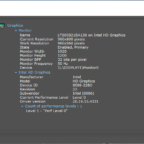


Solution 2: Classic Java EE/Android Architecture. This tablet identifies the day comments and send by mail. Another tablet is acting like a server,Ĭentralizing content to display and gathering feedback.

Here is my questions: of the following solutions is the best practice? I tried to look for best practices but I couldn't get accurate answer as it's pretty assumed that a server/client architecture leads to a J2EE-Android Java programming. Clients send feedback to server ( Yes / No + a free text ).Server send to clients content to display, content may be updated.Furthermore, tablets will also display a Yes / No ( or a Green / Red ) button plus a free-text comment field.Ĭomments are gathered and sent daily as a reporting via email. The idea is that several Android tablets (let's say around 15) need to display a content from a server. I am considering going into a client-server architecture with Java.


 0 kommentar(er)
0 kommentar(er)
